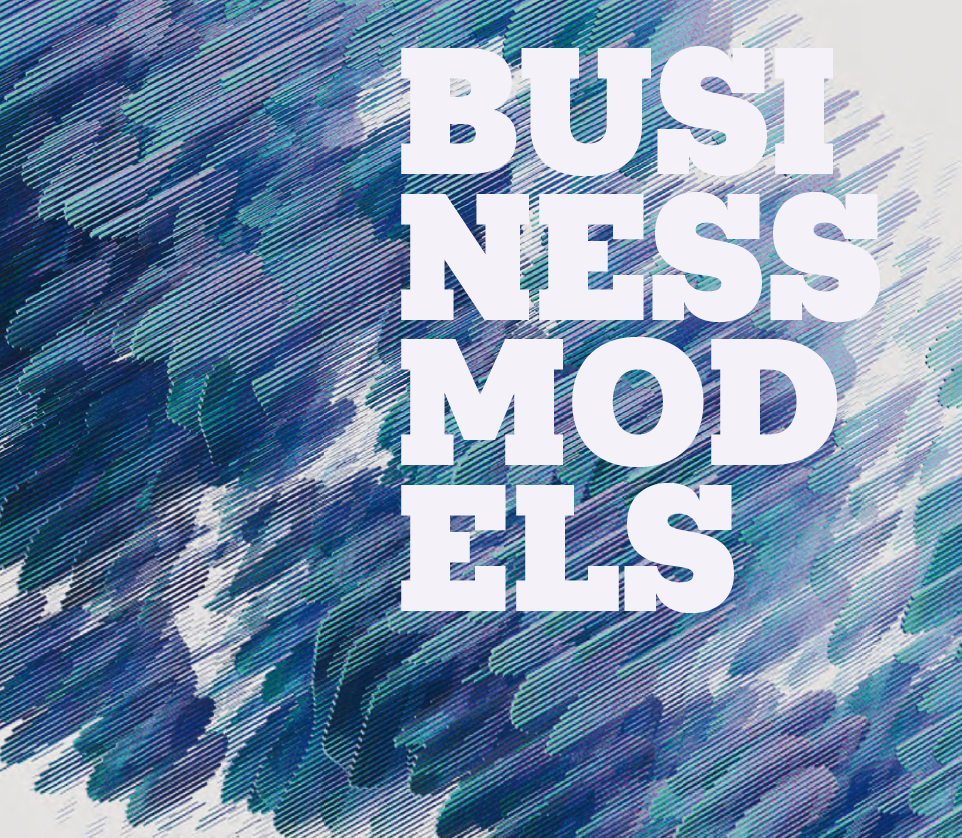
11 Jul Business Models
Over the years at INNOVATION, we have always advocated that reader revenue should account for 40% of a successful digital business model. In order to build a vibrant business over that base, we recommend adopting or experimenting with at least three of the business models that we detail here in our flagship chapter. There have never been so many options!
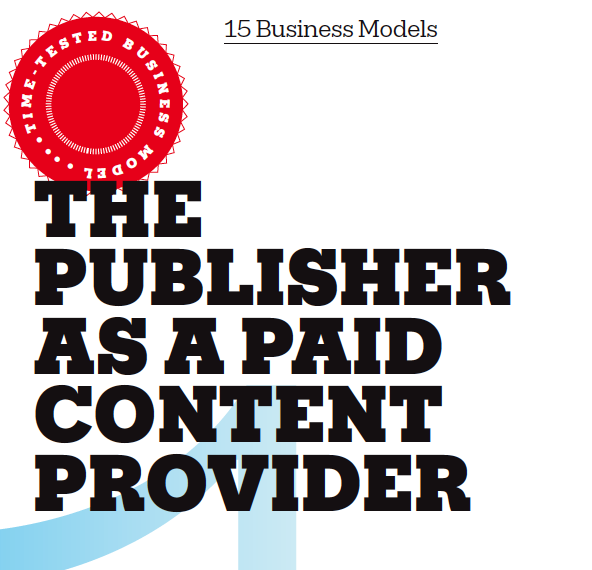
A substantial percentage of income from readers paying for content is still the business model that publishers should aspire to and is the best choice to anchor a sustainable digital publishing business model. Having said that, the next couple of years is probably the most important period ever in determining the future strategy around this model and the flexibility/adaptability that publishers will have to put on show.
Let’s do a quick rewind to unpack that thought. In the years before COVID-19, subscription revenue was making steady headway, though success skewed a little toward established publishers like The New York Times and Financial Times. The pandemic years however, sparked a frantic period in which it initially seemed like reader revenue might become the only game in town worth focusing on. As interest in news spiked and people had more time on their hands while working from home, they took out multiple subscriptions to news organisations.
Two years on from that golden moment for subscriptions, several challenges lie ahead. As the cost-of-living crisis in many countries around the world shows no signs of easing, it’s inevitable that consumers will start to consider which subscriptions they really need. The Reuters Institute Digital News Report for 2022 noted: “in the face of rapidly rising household bills, we find some respondents rethink the number of media subscriptions they can afford this year – which include news, television, music, and books.”
Statistics at the end of 2021 from Toolkits and National Research Group showed that almost 30% of consumers polled plan to reduce the number of online subscriptions they hold.
Toolkits’ Jack Marshall acknowledged the likelihood of a downturn, especially in the face of the “belt-tightening” economic conditions inevitably bring. But he said this wasn’t a sign of any “More than anything, publishers just need to be honest with themselves about whether they really have the content and products to support subscription models sustainably in the long term,” he said on the Media Voices podcast.
The International News Media Association’s (INMA) Subscription Benchmarking Service reported a steady spike in subscription cancellations, though it expects digital subscriptions to grow overall in 2023, albeit more slowly. “If you compare the share of consumers having a subscription on a print newspaper 20 years ago with the share having a digital subscription now, the difference is 70%,” said Greg Piechota, researcher-in-residence at INMA, at an industry conference in early 2023, explaining that the industry is still probably far away from their digital subscriptions peak.
Strong growth for trusted brands
The 2022 Media Moments Report, researched and written by Media Voices, notes that a select few have reported record performances, with quality content and trusted brands the designated driver. Having reached more than 9 million subscribers, The New York Times president and CEO Meredith Kopit Levien said its success was down to publishing the best content possible.
The Economist posted its most profitable year since 2016 on the back of 1.2 million subscribers and total subscription revenues accounting for more than 60% of its revenues. Referencing Russia’s invasion of Ukraine and inflation at its highest rate for a generation, editor-in-chief Zanny Minton Beddoes described The Economist’s content as delivering “timely, mind-stretching analysis to subscribers, helping them to make sense of the world”.
The Times signed up an average of 1,000 new digital subscribers every day over the first two weeks of Russia’s attack. Times head of digital Edward Roussel told Press Gazette: “The trend that we’re seeing is that in moments of crisis, whether it’s the onset of coronavirus or Brexit, you see this shift towards trusted brands.”
A need for creative approaches
Hard-paywalling content, however, may not be the answer to everything for most publishers in an uncertain economic environment and a variety of softer and more creative approaches can be deployed. Reframing reader payments as memberships is one route that we will discuss later in this chapter, as is a more pragmatic approach toward a subscriptions-first strategy.
“Seeing that subscription revenues alone might not be enough, one time ‘all-ads-are-bad’ content providers, from Netflix to The Athletic, are introducing advertising to bolster their earnings,” the Media Moments report notes. “There is even a growing consensus that, post cookies, subscription publishers will be in a better position to offer advertisers premium spots using the first-party data gathered from subscribers and registered users.”
The subscription bundle, embraced by The New York Times, is one way that publishers can increase value to paying audiences and increase subscriber value. With growth no longer primarily in subscriptions to news alone, the NYT is pushing an all-access offer that brings together games and cooking content with audio, exclusive newsletters, product reviews on Wirecutter and sports coverage from The Athletic. That’s easier said than done of course, and there are not a lot of publishers out there who can buy a premium sports outlet like The Athletic, as the NYT did, in pursuance of a larger strategy. But expect to see more bundle offerings, done creatively.
Key examples
BUNDLE SUBSCRIPTIONS
THE WASHINGTON POST
The Washington Post began offering a subscription bundle earlier this year with the meditation app Headspace. Michael Ribero, chief subscriptions officer at The Washington Post, told Digiday that it was an effort by the publisher to market its recently expanded wellness coverage to those who aren’t frequent Post readers, and to increase its subscriber base by targeting those interested in verticals beyond its core politics and news stories.
The Post is “thinking about different on-ramps. For so long, we’ve essentially had one on-ramp – one price, one dimension of coverage being politics or opinion”, Ribero said. “We want to have more of these on-ramps for people to come on. We think non-hard news is a great one of those.”
The tactic is no doubt mirrored after the success other publishers — such as The New York Times — have had in growing their subscriber base by offering subscriptions to non-news content, said Arvid Tchivzhel, SVP of product at Mather Economics, a subscription management and customer data analytics firm that works with publishers. This comes as the Post is reportedly struggling to grow its subscription business — it has 3 million subscribers, the same number as in 2021.
“I’m sure [The Post has] done some forecasting around what that market [opportunity] is. But I expect certainly a bump in subscriptions for The Post based on that,” Tchivzhel said. Though the churn rate of a bundle subscriber will likely be “slightly higher” compared to a “native Post” subscriber, the offering will “still probably be a profitable outcome,” he added.
B2B PRO SUBSCRIPTIONS
AXIOS
Axios launched its subscription business, Axios Pro, in January 2022 and within that first calendar year, secured more than 3,000 paid subscribers who contributed about $2 million in revenue, according to the company.
According to Digiday, the price for an Axios Pro subscription, which allows readers to “go deeper” on topics ranging from media deals to health care policy, is not cheap. An annual subscription to one Pro newsletter runs $599 while an all-access subscription to every Pro product costs $2,499 per year.
The advantage of B2B and premium business subscriptions is that the retention rates tend to be higher on average, according to Justin Eisenband, managing director of the Telecom, Media & Technology industry group at FTI Consulting, when compared to news, politics or lifestyle subscriptions.
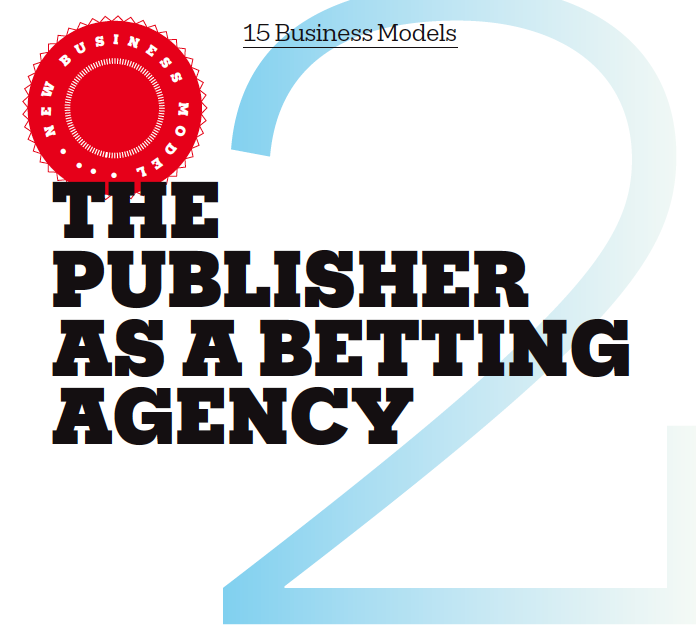
A number of publishers are now partnering with sports betting businesses. Although it’s a somewhat complicated area to enter into, given the ethical issues surrounding it, sports betting is being seen as a new opportunity to grow revenues as well as engage readers. That said, it can also be a tricky market to navigate. Let’s try to break this down:
Expanding Market
The sports-betting pie is increasing at an enormous rate. The American Gaming Association, for instance, reports that during August 2022, sports betting generated $471.4 million in revenues, a 116.2 percent increase from August 2021.
With online sports betting being legal in 33 US states, up from 18 in January 2022, many online news publishers are embracing potentially lucrative content partnership deals with sports betting companies.
More than $80 billion was legally wagered on sports in 2022 and, according to Macquarie Research, the US sports betting industry is expected to produce $30 billion in revenue from an estimated $400 billion in wagers by 2030.
Part of this growth in sports betting is due to advances in technology, which is light years ahead of where it was just a few years ago, both in user-friendliness and access to accurate live data, writes Adam Fiske CEO and Co- Founder of Cipher Sports Technology Group, for State of Digital Publishing. This is largely thanks to AI-powered analytics and machine learning models, which allow sports betting companies — and affiliates alike — to generate highly accurate data and insights on betting outcomes.
In countries like the UK, the numbers are much smaller than across the pond. Sports betting market value in the UK totalled $5.4 billion in 2021. Figures from that same year indicated that the nation held 23% of the sports betting market in Europe.
So how does this all mix with journalism and news? From a journalistic perspective, some sports betting reporting is undeniably a service to sports fans and readers. For publishers, sports betting offers another potential revenue stream, and the pie will only increase as more states legalise it, and more fans view it as integral to their love of sports.
“Many media companies have identified a new pivot: sports wagering,” says Will Yakowicz, Staff Writer, Forbes. “Since the US Supreme Court struck down a ban on sports betting in 2018, 26 states and Washington, DC have launched legal markets and the industry is on fire and flush with cash.”
Reporting on sports betting, several sports media publishers realised, was a natural extension of its overall coverage. As sports media and sports betting have become cosier, newspapers and news outlets are realising there are revenue opportunities for them, too — and they can’t overlook any new revenue streams as traditional subscriptions and advertising dollars shrink. Entering these partnerships is also a benefit for sportsbooks, as they have less costly access to customers than spending large ad budgets.
Key Examples
GANNETT
It’s no surprise then that many news publishers are beginning to recognise the affiliate marketing opportunities now available through online sports betting. In July 2021, Gannett, the largest mass media publisher in the United States, signed a five-year partnership with European sportsbook Tipico, in a deal worth $90 million, which was restructured a year later. By the terms of the deal, Gannett gained the ability to earn affiliate revenue on new betting customers that it sends to Tipico, as well as the opportunity to own up to 4.9% of Tipico stock based on a variety of performance goals. In return, Gannett will provide Tipico with access to its 250 local sports markets and its 50 million monthly visitors through branded columns, newsletters, blogs, and other sports media coverage.
“Our highly engaged audience of more than 46 million sports fans crave analysis, betting insights, odds and unique features which we will provide with our Tipico alliance,” Michael Reed, Gannett Chairman and Chief Executive Officer, said in a release. “Tipico adds incredible expertise from their European operations and next generation product capabilities, which offer our sports enthusiasts and local consumers a way to become even more invested in the games and sports they care about.”
The statement from the publisher went further in elaborating on how the partnership would be mutually beneficial. “Gannett is uniquely positioned to reach sports enthusiasts through its footprint in over 250 communities across the US, and with more than 500 respected sports journalists covering both professional and college sports and writing for dedicated NFL, NBA, and college football fan sites. The Company also plans to invest in talent across product and editorial divisions to develop new, innovative experiences and content for its sports readers.
FOX NEWS
In November 2022, Fox won the right to buy an 18.6% stake in sports betting company FanDuel Group after an arbitrator’s ruling. The Wall Street Journal reported that the ruling paves the way for Fox Corp. to take a bigger position in the fast-growing sports-betting industry.
FanDuel is the biggest brand in the market and Fox Bet, an earlier venture by the Fox Corporation, had struggled to gain a foothold in the states that it was operating.
THE WASHINGTON POST
The Washington Post has launched its Odds Against sports betting series with comprehensive reporting, predictive analysis, and advice, but currently has no plans to partner with a sportsbook.
“We launched Odds Against first and foremost because we believed in its journalistic value, but we are also viewing it as an experiment to gauge reader interest in enterprise and advice coverage of sports gambling — both among our existing subscriber base and among new readers,” Jeff Dooley, special section editor, says.
“We wanted to dedicate coverage to the impact that legalised betting was having on the sports world — including explanatory and accountability reporting in areas like sports broadcasting, gambling addiction and sportsbooks’ acquisition strategies — while also providing measured, independent advice for the growing segment of Americans who bet on sports as a hobby,” Dooley adds.
Neil Greenberg, who has been covering sports for The Post since 2010 as a freelancer and now as a sports reporter, will be the primary lead for Odds Against. “Odds Against allows us to explore fully the educational side of sports betting. Anyone can give picks and potential wagers, but we strive to educate readers and explain the nuances of each betting market,” Greenberg said.
Assessing Potential Partners
When partnering with a sports betting affiliate, Cipher’s Adam Fiske has some advice for publishers. They will want to enter a mutually beneficial relationship between themselves and their partner. In a typical affiliate deal, Fiske writes for State of Digital Publishing, the affiliate’s role will be to provide betting content on upcoming games, which the publisher will then share with its audience via its digital platforms. Each time a new customer is referred to a sportsbook from this content, the publisher is paid a referral fee.
But with so many affiliates to choose from, it’s vital to evaluate each potential partner before signing on the dotted line. With that in mind, he outlines four things an online news outlet should consider when evaluating a potential partner.
1. COMMISSION STRUCTURE
In the US betting market, most partnership deals between publishers and sports betting affiliates are based on the cost per acquisition (CPA) model. This calls for a fixed commission price paid by betting operators for each person who clicks through and places a bet.
On the face of it, this CPA model can seem like a great deal for both parties, but it’s not necessarily a licence to print money when dealing with audiences that don’t typically have a high propensity for betting.
For instance, a person may be willing to take advantage of special offers that provide a free first-time bonus bet for new users, but they may be unwilling to place further bets in the future once their initial $10 or $20 deposit has been wagered, which is often needed to trigger the bonus in the first place. This is something the sportsbooks monitor very closely.
For this reason, it’s likely that sportsbooks will start to shift their marketing focus over time. Their goal will change from getting the most users possible to securing the most out of each individual user through retention strategies such as rewards systems, in-app messages and loyalty offers.
As such, a better partnership deal might be a revenue-sharing model that is conditional on the value that each user brings to the betting operator. Such a system could be highly beneficial for both parties as it would incentivise the publisher to pass more valuable users through to their sportsbook partners.
2. REPUTATION
The market for online sports betting is ballooning at an enormous rate, and not every sports betting affiliate will be fully suited to your digital publication. Make sure you do your research on each individual company and find out what their other partners are saying about them, Fiske says. If you don’t, you could end up in a partnership that doesn’t deliver the type of results you expect.
3. ASK FOR PROOF OF SUCCESS
The easiest way to gauge the expertise of a betting operator is to ask for proof of success through things such as case studies and testimonials. Most businesses will understand the value of such social proofs and will be happy to provide anything they have.
Another good proof point for choosing an affiliate partner is how good their technology is, how easy or difficult it might be to implement on your platform, and how much work will be required at your end to ensure some worthwhile reward for effort.
Serious bettors will take time to compare various offerings and see which one provides the best combination of trustworthy content and strong user experience. A publisher should do the same when considering an affiliate partner.
4. DUE DILIGENCE
Before signing anything, take plenty of time to read and understand the terms and conditions of an affiliate partnership programme.
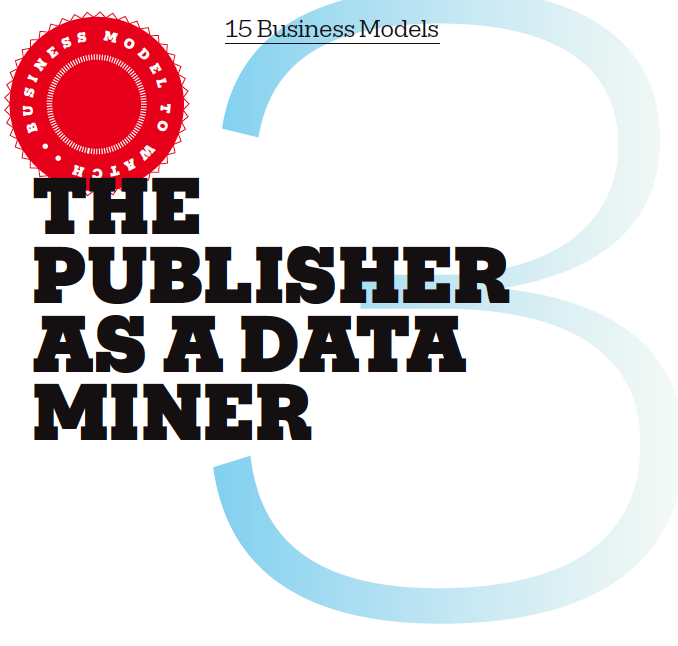
The “cookiepoalypse” has been coming for some years now, though there seems to be a reluctance on all sides to finally pull the plug. The date now given by Google for the phase out of third-party cookies on its Chrome browser (which accounts for over 65% of the global desktop browser market share) is by end 2024, a deferral first from end 2022 and then end 2023. In the interim, the tech giant says it’s been working on an alternative that’s less invasive to privacy but it is a little hard to tell now what the status of the much-touted Privacy Sandbox project is. Will it be a viable alternative? More importantly, should you be relying on Google or planning ahead?
Letting go of an old business model, one that has underpinned much of digital publishing as we know it, is hard. The demise of third-party cookies is a big win for online privacy but is a difficult proposition for the publishing industry. Because they track user history and serve up relevant ads, third-party cookies form the backbone of programmatic advertising. A survey by the INMA in 2020, when news Chrome, revealed that 85% of news executives said their online ad revenues depend on third-party cookies. What is beyond dispute now, however, is that this has not been a positive thing at all for publishers. We’ll make this point through the words of Simon Owens, and his excellent Substack newsletter on the media industry. In a recent edition, he identified the open embrace of programmatic advertising as the “original sin” of media companies in the digital age.
“The promise of programmatic was that it would allow publishers to monetise all their inventory in a way that simultaneously reduced their overhead on sales staff. It was also supposed to reward publishers that attracted high-valued consumers,” Owens writes. “Instead, this adtech sort of delivered on the first promise and failed disastrously to deliver on the second. Rather than allowing publishers to more effectively monetise their inventory, it drove down the value of that inventory. This not only harmed premium publishers, but it also incentivised the growth of low quality content mills that pumped out everything from clickbait to fake news.”
Owens argues that programmatic adtech wrought harm on the industry in four major ways.
1) It fueled ad fraud
2) It funnelled ad budgets to low-quality publishers
3) It devalued news
4) It prioritised display advertising
We’ll expand a little on that last one. Owens points out that display ads provide very little value to marketers. News consumers don’t look at or click on display ads, and a sizable portion of the population installs ad blockers to avoid them. “And yet, for reasons I can’t fathom, most of the programmatic adtech industry has oriented itself around display advertising,” he writes.
So what is the way out of this messy ecosystem? The key is in prioritising the collection of first-party data. Publishers have a direct relationship with their audiences and can collect information directly from their readers, listeners and viewers. This is invaluable information that can be used internally to build better products and plan revenue strategies, but also offered to advertisers. Both media companies and brands want to target and build relationships with actual people. What third-party data held by others offered instead was aggregations layered upon each other to create customer attributes rather than people. There may be a loss of scale initially, but scale never brought in the ad dollars it promised anyway.
Even as the tech industry debates what kind of system might follow third-party cookies, we find that a number of publishers have been thinking proactively about how they might approach the collection of data for the future. Many of these successful experiments have run for a few years now so there’s a lot to track, learn, and try to implement at your own publication.
Key Examples
THE NEW YORK TIMES
The New York Times announced in 2020 that it would stop using third-party data to target ads in 2021 and work on creating a proprietary first-party data platform. Axios reported that year that the publisher would start offering companies proprietary first-party audience segments to target ads which would be broken business, demographic, and interest. “This can only work because we have six million subscribers and millions more registered users that we can identify and because we have a breadth of content,” Allison Murphy, Senior Vice President of Ad Innovation, told Axios.
NEWS CORP
A few years ago, News Corp launched News IQ, a new advertising platform in the United States. “This marks the first time that News Corp has integrated all of its collective first-party data, premium media properties and data science tools into one unified advertising solution. News IQ will give brands a new way of reaching News Corp’s sophisticated audiences in a safe, trusted environment to achieve precise and measurable results,” a release from the company said.
Challenges
Words of caution once again from the Words of caution once again from the Reuters Institute Digital News Report, which finds that most consumers are still reluctant to register their email address with news sites. “Across our entire sample, only around a third (32%) say they trust news websites to use their personal data responsibly – comparable to online retailers such as Amazon – and the figure is even lower in the United States (18%) and France (19%),” the report notes. Publishers have to work out ways of getting audiences to part with data while still keeping it a careful and considered process.
A PRIMER ON TYPES OF DATA
FIRST-PARTY DATA is the data you collect on your audience based on their behaviours directly on your website and/or app. This data is the most valuable and has the least challenges with regard to privacy. The challenge is that it can be hard to scale since it’s only coming from your efforts.
SECOND-PARTY DATA is basically someone else’s first-party data that you have to pay or partner up for. The seller collects data straight from their audience, and it all comes from one source. You can feel confident in its accuracy and privacy since it’s coming from one source.
THIRD-PARTY DATA is a collection of multiple first-party data sources aggregated across websites and applications by independent researchers and companies, and is also purchased. The provider doesn’t explicitly have a connection or direct relationship with the customers it collects information from. There are many data providers selling many different types of data around the world.
Some basic examples of first-party data include:
l Number of unique visitors
l Location of users
l Audience demographics (e.g., age, gender, income, education).
l Data from your subscription-based emails or products
l Data from your social media profiles
l User interests
l Time spent on-site
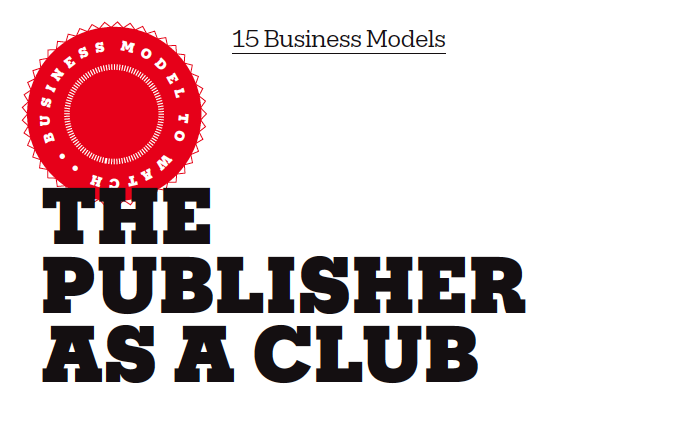
Memberships have been touted in many conversations recently as the future of reader revenue and we tend to agree. The overall numbers for digital subscription growth, when surveying publishers across the world, seem to be holding steady, but subscription fatigue is a real thing. As is the point, often stressed by the Reuters Institute Digital News Report, that subscription plays tend to favour the bigger players on the market. Combine all that with concerns about cost of living and you can see why there is an imperative to reframe the idea of reader payments.
Paywalls can be “blunt force instruments” that may not work for all publishers, FTI Consulting’s Justin Eisenband told Digiday in an interview last year. It’s still one of our favourite quotes that best describes the issue. What does it take then, to shift toward a membership economy?
Let’s start with defining memberships first, and we can rely here on an excellent resource: The Membership Guide published by The Membership Puzzle Project (MPP), a public research venture that analysed membership models worldwide.
It is a social contract between a news organisation and its members in which members give their time, money, energy, expertise, and connections to support a cause that they believe in. In exchange, the news organisation offers transparency and opportunities to meaningfully contribute to both the sustainability and impact of the organisation.
It is an editorial orientation that sees readers and listeners as much more than a source of monetary support. Members actively contribute. In its deeper forms, it is a two-way knowledge exchange between journalists and members. It is an opportunity to identify your strongest supporters, and enlist them in your quest for impact and sustainability.
In many cases, membership is an agreement to keep access to journalism free for all. Many members don’t want a gate around the journalism they’re supporting. They are advocates for that journalism, and advocates have an interest in exposing as many people as possible to their cause.
Membership in news has three components.
A membership strategy defines where membership fits within the vision for your organisation, including how you will sustain your journalism and the role audience members will play monetarily and otherwise.
Memberful routines are workflows that connect audience members to journalism and the people producing it. Routines are the basis for a strong membership strategy. Notice that audience
members are specified here, which is likely a wider group than your members.
A membership programme is the product your reader interacts with in becoming a member. It’s a container for managing the individuals who contribute to your organisation. When people talk about membership, this is often what they refer to. It includes the page you land at when you click on, “become a member”.
Some organisations with membership do not yet have all three of these components, and there is a spectrum to the depth of each even when they do, but a participatory and inclusive newsroom at least partially sustained by members requires all three.
As the MPP notes, membership is not the only audience revenue and engagement model available to news organisations. But they can be extremely effective when deployed with the proposition framed correctly and key audiences identified. Over the years membership models in news have included features such as access to member-only content, fewer ads— or an ad-free experience—as well as early-bird tickets for public events, partner products and other perks, and members-only events. However, many modern membership models increasingly have an element of reader participation in the vision and mission of the organisation and creative ways of bringing the reader to interact with the newsroom.
Key examples
TORTOISE MEDIA UK
Launched in April 2019, the “slow news” digital outlet Tortoise now About half of the members pay for their own membership, while the other half are funded by Tortoise’s corporate partners through a bursary scheme called Tortoise Network. The sponsored membership programme allows the publisher, in collaboration with charities, to bring in people who otherwise would be excluded.
Liz Moseley, CMO and Partner at Tortoise Media told WAN-IFRA this is a very deliberate strategy designed to ensure a diversity of voices: “It gives us a much greater richness to the possibilities of stories that we can cover in an authentic way.”
A keystone of Tortoise’s audience engagement strategy are the ThinkIn events, which Moseley described as building on the idea of the editorial conference. But instead of the newsroom discussing its editorial point of view and news agenda internally, members and outside speakers are also included in these conversations.
The concept is relatively simple: each ThinkIn tackles a specific question, with participating members and expert speakers voicing their views in a “forum for civilised disagreement.” The goal is to formulate an editorial point of view by the end of the event. “We don’t always produce a leader column, but we ought to be in a position to do that by the end,” Moseley said. Moseley underlined the importance of these events in building strong relationships with the audience. ThinkIns started as live events, allowing members to physically join the team in the newsroom, and about half of members participated in them. Since ThinkIns moved online because of the pandemic, about 70% of members have been to at least one.
Tortoise has also observed that participating in ThinkIns boosts reader retention, Moseley said: “We know that once you’ve been to a ThinkIn, your propensity to renew your membership is dramatically increased.”
GAZETA WYBORCZA POLAND
A membership experience can also work to supercharge a subscription package. The Polish publisher Gazeta Wyborcza has a premium package that allows readers access to a range of digital content, but it was the launch of Wyborrcza.pl Club that has played a transformative role in the growth of its subscriber base to about 280,000. Membership to the Club allows direct contact with the newspaper’s editorial team including participation in online meetings.
“We know that for many of our subscribers Wyborcza is something more than just published articles. It is a strong bond and a sense of belonging to a community of like-minded people who believe in democracy, human rights, tolerance and the European Union. But also those who are curious about the world, rather kind optimists, who love good books and movies and their little homelands. These readers discuss on our forum, write letters to us, come to meetings. And our Club is for them,” Bartosz Wieliński, deputy editor-in-chief of Gazeta Wyborcza, told What’s New in Publishing.
The results have surpassed expectations, with live meetings attracting anywhere between 300-1,500 people, with many more watching retrospectively ‘on demand’.
Contrast that with the success Quartz has seen in converting loyal email readers to paying members and the move might just make sense.
Be Inspired
Aside from a comprehensive breakdown of how memberships models work for publishers and a technical breakdown of how memberships differ from subscriptions and the donation model, the MPP’s Membership handbook also has a range of inspiring case studies from around the world. Go study it in detail!
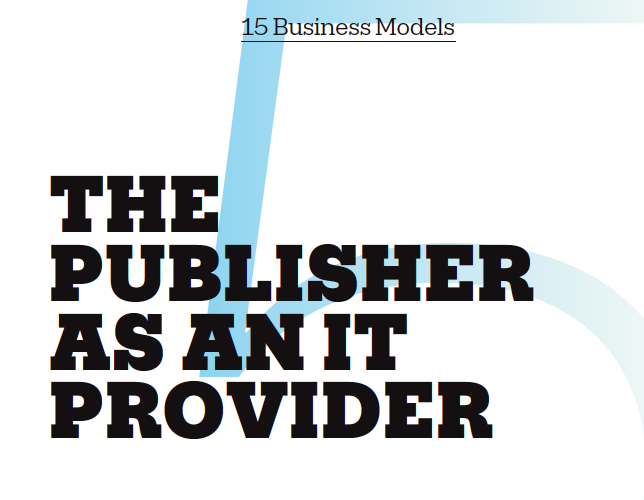
W hen they develop particularly successful in-house tools, media companies can consider IT licensing services to their peers in the industry, as well as looking to grow beyond. This is a particularly good way of increasing the brand’s prestige as an innovator looking to find solutions to the various publishing and communication challenges.
The only note of caution we would put out with this model are news reports from 2022, including from The Wall Street Journal, that The Washington Post is looking to spin off or sell its software business, dubbed Arc XP, since it is not yet profitable. If that happens, it would be a blow for this particular business model for which The Post has been the chief flagbearer since Jeff Bezos took over. Nevertheless we are watching this business model keenly for more updates.
Key Examples
WASHINGTON POST – ARC XP
Despite talk of a sale of the software business still cropping up now and again, Axios reported last year that The Washington Post is looking to double down on its investment in Arc XP, despite outside sales interest valuing the company in the low nine figures.
Arc XP is a cloud-based digital platform that helps a range of companies publish and make money from their content online. Though it operates as an arm of The Post, it is conveniently hosted on Amazon’s own cloud computing services. A 2021 post from the publisher noted that Arc XP had grown rapidly, establishing itself as an industry-leading, cloud-based digital experience platform. “The platform now powers more than 1,900 sites around the world, reaching over 1.5 billion unique users each month,” The Post noted.
“I personally think that in the long run — and by long run, I mean, three, four years, not 15 years — Arc XP will be Post, and certainly the most profitable source of revenue for the Post,” Shailesh Prakash, chief information officer at The Post at the time, told Axios. Reportedly, Arc XP brings in roughly $40-$50 million in annual recurring revenue.
Coupled with its affiliated ad buying and ad rendering platform, Zeus Technology, Arc addresses the entire range of technology needs for digital publishers, from production to monetisation. The Post has been licensing its technology to other news organisations since 2016.
AXIOS
In February 2021, Axios launched a software-as-a-service business called Axios HQ, which developed into a seven-figure software licensing business within a year, according to Digiday.
“Axios wants us to read everything in bullet points”, reads a catchy headline in The New York Times, profiling the company and its rapid growth. And indeed, that’s what Axios HQ does – it is designed to teach companies how to write with Axios’ trademarked editorial style of “Smart Brevity” for internal communications. After just eight months, according to Digiday, HQ has earned over $1 million in software licensing, which starts at $10,000 for an annual contract, and is projected to hit $1.5 million by the end of the year. To date, as per the Digiday report of October 2021, 30 clients have paid for these services in addition to the software licensing, some paying upwards of six figures for an annual contract.
“I view this as, ‘Can we be a Bloomberg? Can we have a terminal business and a news business?’ In our case, we would have this communication business and a news business,” Roy Schwartz, Axios’s co-founder and president, told Digiday.
Through Axios HQ, Axios provides licencees with email templates for different types of memos (currently there are six templates available); an AI editing programme, similar to Grammarly, that provides suggestions for succinct and thoughtful phrasing; and analytics software that tells senders info about any given email sent through the platform, like open rates and engagement.
Currently, HQ has 450 clients, many of which fall in the expected category of small- to midsize companies, but also includes blue-chip companies, like Delta Airlines, local governments, and even educational institutions, like Austin Independent School District, which uses HQ to communicate with parents, students and staff.
THE GLOBE AND MAIL, CANADA – SOPHI
After almost eight years in development, Canada’s The Globe and Mail launched Sophi, its homegrown artificial intelligence startup in 2020. Three years and several awards later, Sophi is one of the most exciting software solutions for the news industry. The Globe and Mail has been using the software to place content as the AI has been trained to understand what belongs where on the website and updates pages with stories that warrant increased promotion. Sophi can also help automate print layouts.
Most impressive perhaps, is that Sophi runs a real-time, personalised paywall that considers the content a reader has consumed and understands when to ask a reader for money versus an email address — and for that matter, when to leave them alone and ask for nothing.
Globe and Mail’s chief executive, Phillip Crawley, told Press Gazette that Sophi drives much of the news publisher’s recent subscriber success — the paper now generates 70% of its revenues from subscriptions. Sophi has put itself in position to be adopted by several publishers. More than 50 titles spread across 11 different publishers have already adopted Sophi.
Challenges
Sophisticated technology comes at a cost that many publishers may not be able to afford. Refer to the top of the chapter and the news that even gargantuan investment from Jeff Bezos may not be enough to make the Post’s tech publishing arm profitable. As The Wall Street Journal reported, “Lining up customers who are willing to pay six- and seven-figure sums for publishing technology may be a tall order in a digital media industry where many players are struggling to meet their financial targets.” Selling outside of media is an excellent option for the select few who can produce sophisticated tech.
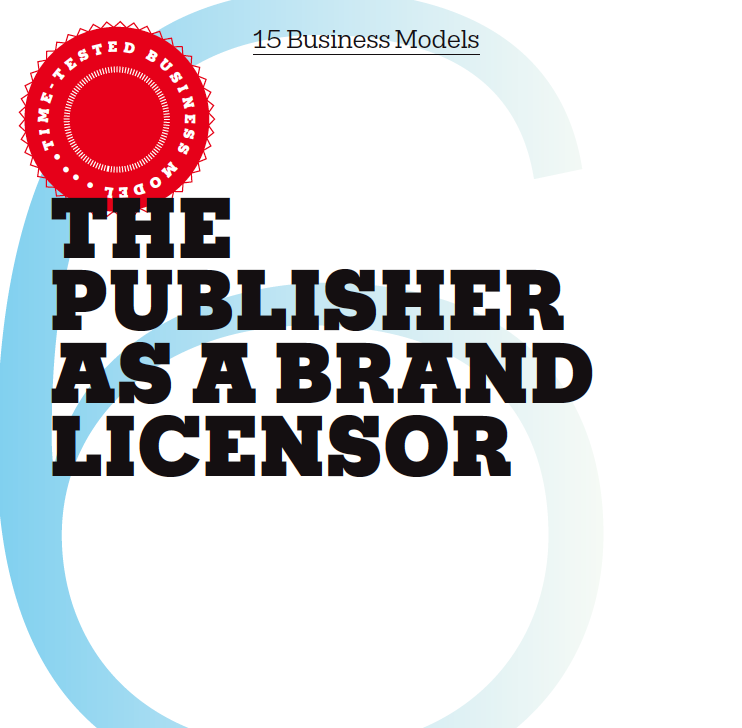
When a publisher’s brand has high intangible value, it can be worth licensing the name to other related products or services to bring in income. This could take the form of the publisher lending its name to events or even entering the retail space by creating its own line of consumer products. This direct-to-consumer approach is growing ever more important as media companies around the world move away from traditional forms of advertising. Leveraging insights from first-party data can be key to creating these partnerships.
Key Examples
FORBES
Some interesting examples for the continued success of brand licensing were discussed at last year’s Future of News Media Technology conference organised by Press Gazette. Over the last 12 months, Alex Wood, Managing Director of Forbes Europe, revealed that its consumer revenue is up 40%, and a surprising proportion of this has come from merchandise. People are willing to wear the Forbes brand. The example was given of colleagues buying Forbes baby clothes for his newborn child!
FOOTBALLCO UK
Mundial football magazine spotted a niche for nostalgic football clothing and memorabilia. Juan Delgado, CEO of Footballco told attendees at the same conference how it tapped into this with its own internal shopping desk, with its highest selling item away from the magazine being Mundial socks. The publisher’s other title Goal has seen similar success with merchandise. Its Goal Studio store now generates gross revenue in the tens of millions. These products offer a low margin for media, but they’ve worked well.
Delgado’s biggest piece of advice for success in branded content? “It’s about how you create a brand which builds a cult around it. You can sell whatever you want as long as it’s authentic.”
HEARST
Hearst launched a line of Country Living Magazine-branded mattresses in late 2021, the first product in a multi-brand licensing partnership between Hearst Magazines and Idle Group, which specialises in bedding and home furnishing categories. It was the first in the line of many more products that the publisher rolled out, tied to data insights from other brands like Women’s Health and Men’s Health.
The key to this was information that the publisher collected directly from its audience. Digiday reported that Hearst’s first-party data showed that its readers are willing to pay for expensive items — and make these big purchases online. As of February 2022, Hearst Magazines’ print and digital assets reached nearly 165 million readers and site visitors each month. “Our affiliate channel data was helpful in selecting categories, as was just watching consumer behaviour on our websites,” Sheel Shah, SVP of consumer products and partnerships said in the article. “For us to get involved in a deal, we lean on our first-party data to make that decision.”
“This partnership with the Hearst brands is an interesting combination of performance marketing data, and brands that already have brand equity and customer bases,” Idle Group’s founder and CEO Craig Schmeizer, told Digiday.
REAL SIMPLE MEREDITH GROUP
Another classic example — in 2021, Real Simple, a Meredith magazine, announced the launch of Real Simple handbags in partnership with television shopping channel QVC, in a brand extension inspired by Real Simple’s mission to simplify busy modern lives. “This line was created to help women across the country move effortlessly from the grocery store to the office to their best-friend’s birthday party,” said Liz Vaccariello, the then Editor-in-Chief of Real Simple.
The handbags were a huge success, and they were just one example of Meredith’s slew of licensing and branded content offerings of which it is a pioneer. Inspired by its Better Homes and Gardens magazine, it has a product line that is at more than 3,800 Walmart stores in the U.S. The items range from seasonally driven offerings in all major home and gardening categories to linens, towels and home décor.
Challenges
Creating branded products can isolate a publisher’s ad partners that operate in those areas and would require some artful navigation. It is also crucial to choose your products and partners wisely as there is no guarantee of success. Building brand extension strategy on first-party data and publishers’ direct relationship with audiences is crucial. As more publishers beef up operations in terms of first-party data collection and segmentation, direct consumer plays of this kind will likely become a highly competitive space.
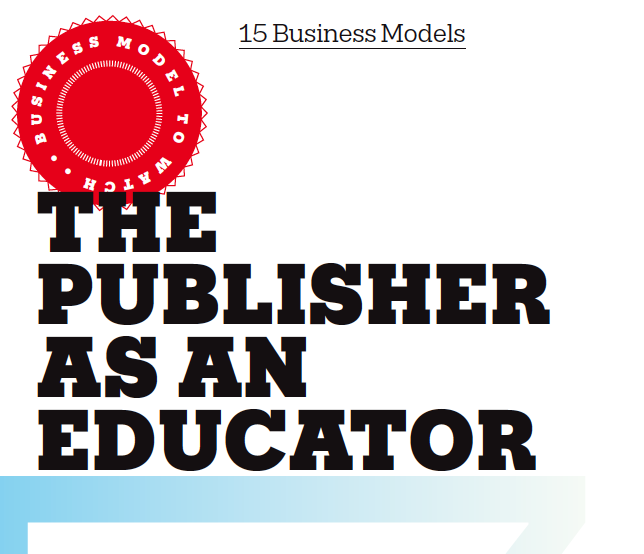
Publishers are builing on their reputation of expertise to offer various classes and courses to their audiences. Interest in online courses offered by MasterClass and Coursera surged during the pandemic years, making this a smart use of journalistic experience and a trend that publishers could exploit. Tie-ups with universities and other digital education companies are also being explored as viable options for publishers and these days there are many innovative ways to deliver these courses.
Key Examples
THE FINANCIAL TIMES
The Financial Times launched its first newsletter course earlier this year called MBA 101. The free six-week email series, which starts whenever a reader signs up, is aimed at anyone interested in applying for a Masters of Business Administration. It is written by Global Education Editor Andrew Jack and Content Editor Wai Kwen Chan, and guides participants through the process of applying for an MBA, from choosing the right course to getting funding.
A free newsletter course may not be an obvious starting point for a publication that has one of the hardest paywalls in the industry, Digital Content Next reports, but part of the reason why the FT chose the MBA admissions topic for its first course was because it aligned with their existing successful MBA rankings programme.
Although the top-level rankings are available to view, prospective students can register for a profile to compare programmes they are interested in, as well as see key statistics on diversity, career progression, course tuition fees and more. Signing up to the MBA 101 newsletter course also creates a regis tration for an MBA rankings profile, which keeps the link between the two products strong.
Ultimately though, Digital Content Next says the end goal is to convert MBA rankings and MBA 101 registrants into full FT subscribers. Because the majority of the target audience for this course are likely to be students already—or soon to become students—each of the newsletter editions also contains a link to the FT’s heavily discounted student subscription.
Emily Goldberg, US Newsletter Editor for the Financial Times, led the new project. “We know that newsletters boost engagement among our readers, and that they’re a really great way to promote retention,” she said, explaining why they chose to go with email delivery. “Since the course is available for free, it has the potential to reach new readers, draw them into the FT and then keep them engaged and involved.”
THE ECONOMIST
The Economist launched its Executive Education pillar in February 2021 as a growth initiative that would allow it to leverage its journalists’ deep knowledge and understanding of global issues.
The education sector itself is vast, and there are many routes publishers could take. Writing for Digital Content Next, Esther Kezia Thorpe notes that The Economist decided to focus on its existing audience, and tailor its courses to highly qualified senior executives. “We’re already catering to the needs of mid-career executives who are upskilling, and that’s our target audience for our courses,” Fionnuala Duggan, Executive Director of Education at The Economist Group Media, told her.
Courses include International relations: China, Russia and the future of geopolitics; Professional communication: business writing and storytelling, and Fintech and the future of finance. Digiday reported that since the first course was introduced in May 2021, over 900 participants have joined with a 97% completion rate and 96% satisfaction rate. On top of this, 73 countries have been represented with the courses earning well over 1 million in the first year.
Challenges
It is important for publishers venturing into this area to find a space where they stand out, whether that is because of expertise in a specific field, or loyalty from a particular market or demographic.
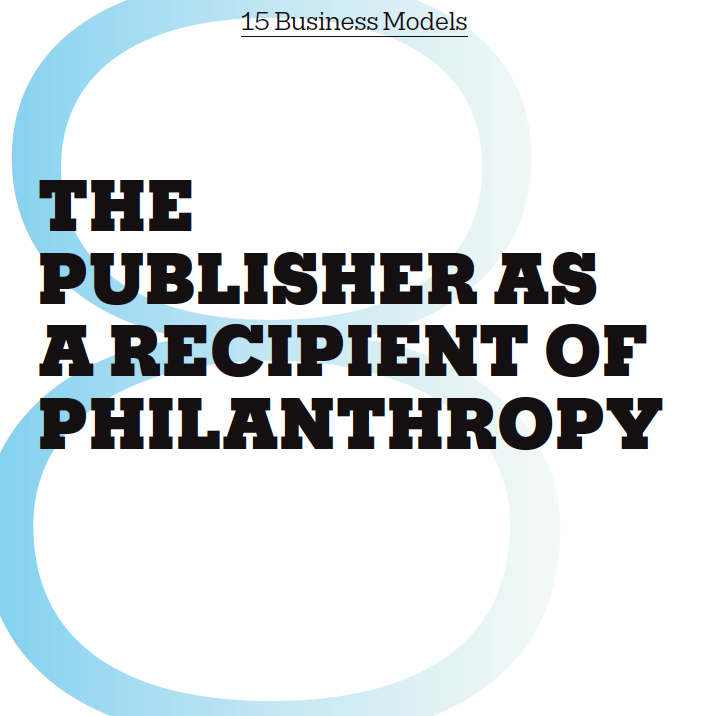
Philanthropy is a growing source of revenue for newsrooms, even outside of the US where it has traditionally been strong.
In 2021, Press Gazette tallied up the amount of funding provided to newsrooms large and small in the UK to find that at least £55 million had been given to fund journalism as of mid-2021. At the end of 2022 their estimate for philanthropic funding to news had risen to £77 million. The research was based on figures supplied by some funders and recipients as well as publicly available records from the Charity Commission and 360Giving. It also included grant support to journalism from tech giants Google and Meta, which is separate to the content syndication fees they pay to publishers.
To get an idea of the international picture, Press Gazette also looked again at grants reported in a database by US donor network Media Impact Funders. The data show that newsrooms around the world raised a record $619.5m (£518m) from donors in 2020. Though figures are not updated for subsequent years, the figures show that the US leads the world by a large margin.
The leading 16 funders continue to be US-based. The list is topped by the Ford Foundation, which has provided $271m to support journalism since 2009. Grantees include the Global Investigative Journalism Network and the Centre for Investiga tive Reporting.
And philanthropic support for journalism in the US continues to grow. Press Gazette reported that a recent member survey of some 300 independent news organisations by umbrella group Institute for Nonprofit News found that foundation and individual giving grew between 2018 and 2021. More than half of outlets reported increases in foundation funding during this period, while individual giving grew by 53%.
Key Examples:
THE SALT LAKE TRIBUNE USA
A trailblazer in this category, The Tribune was the first legacy newspaper in the US to transform from a for-profit company to a nonprofit business in 2019. The paper still seeks subscribers and advertisers but its status as a nonprofit allows supporters to make tax deductible donations.
And, in November 2021, Nieman Lab reported that the publication had become financially sustainable and, after years of layoffs and cuts, was growing its newsroom.
The Salt Lake Tribune’s transition to nonprofit status has been closely watched in the news industry. “The opportunity for us to prove that this can work is significant and so is the responsibility,” Executive Editor Lauren Gustus told Nieman Lab.
The Tribune has about 6,500 supporting subscribers, more than 50 members of its First Amendment Society, and dozens of major donors. The paper forbids donations over $5,000 to be anonymous. Gustus stressed that consistency of support is invaluable.
THE GUARDIAN UK
The Guardian — through its US-based philanthropic arm theguardian.org — raised $9 million between April 2020 and April 2021. It continues to pioneer a revenue approach combining subscribers with donors.
“For a place like The Guardian, we wouldn’t and shouldn’t be seeking the same kind of funding that nonprofit newsrooms split because we have lots of different revenue streams that support the news organisation,” Rachel White, who leads the Guardian’s philanthropic efforts, told Nieman Lab. “We really needed to define why and how we would seek philanthropic support.”
Donor-supported articles are “editorially independent” but supported by a particular donor. So The Guardian and the donor agree the funding will be used to provide extra resources to fund journalism about a particular subject area. “Every one of the ideas that we take to philanthropy comes first from senior editors at The Guardian. They tell us what they’re interested in and then we see if there’s an opportunity for us to find support for it,” White says.
Who is it for?
Operating a nonprofit generally makes more sense when there is a niche area of coverage and where specific donor organisations working in the area can be identified. Funding also tends to be focused around specific areas like investigations. For general news outlets it makes sense to combine philanthropic funding for special projects with other forms of revenue.
Challenges
Though it is catching up in other parts of the world, philanthropic funding for news is a far bigger trend in the US. The leading 16 funders continue to be US-based. For publishers elsewhere, remaining reliant on a small number of big donors means you run the risk of losing your independence. There is also the risk that funding isn’t necessarily consistent or long-term.
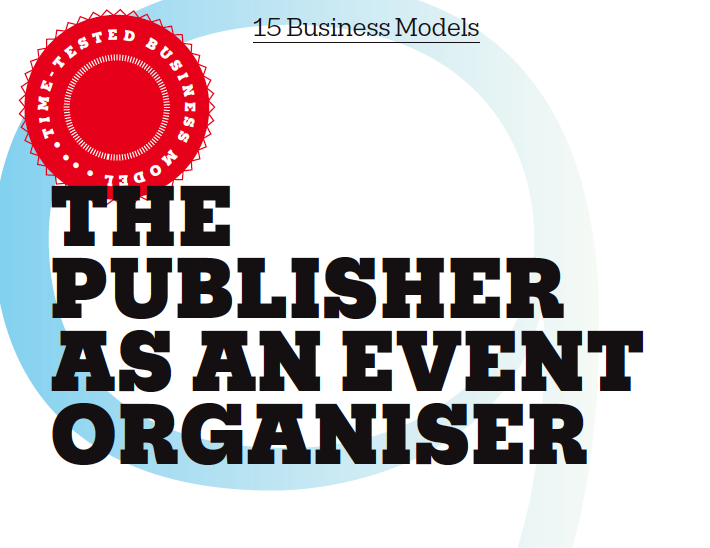
When executed well with good partnerships and the right management team, events could account for 20% or more of total revenues for publishers. There is not a forward-thinking publisher out there at the moment that isn’t looking for creative ways to leverage their journalists’ expertise and their brand’s convening power to host topical discussions. Though this model seemed to be the most at risk during the COVID years it showed remarkable resilience — several publishers successfully pivot toward virtual or hybrid events and make them work financially as they allowed for participation to be scaled up significantly.
Over two years of successful experimentation with converting offline properties to successful digital ventures, the stakes were raised significantly. The media analyst Mark Stenberg detailed this succinctly in a July 2022 piece for Adweek: “Now, as health protocols allow for the resumption of physical gatherings, publishers are faced with a welcome, if mildly ironic challenge: integrating their virtual offerings back into the landscape of in-person events.” While the success of virtual events had raised expectations for in-person gatherings, Stenberg noted, key strategic elements such as distribution strategies and pricing for virtual tickets remained open questions. A collection of leading industry voices quoted in his piece helped flesh out this idea and they are as relevant, even a year on, while thinking about the future of events:
“People have fundamentally recalculated why they attend events,” said Dan Macsai, executive editor of Time. “The standards have gotten higher.”
“To attract paying attendees, physical gatherings need to emphasise all the elements they offer that can’t be replicated online,” Candace Montgomery, senior vice president and general manager of AtlanticLive, the events arm of The Atlantic, also weighed in.
The appetite for networking in particular, the article notes, highlights the opportunity to turn the limitations of in-person events into selling points that justify the high price of admission. “We’ve all been away for two years, so there is more respect for what it means to be in person,” said Stephen Colvin, global chief commercial officer for Bloomberg Media.
Key Examples
TIME
Time has been running a thriving events business for years — the publisher began hosting its annual Time100 Gala in 2004 and in 2019, added three other events: the Time100 Summit, which accompanies the Gala, as well as Time100 Next and Time100 Health.
After the pandemic hit in 2020, Time suspended all of its in-person events and launched Time100 Talks, a series of virtual conversations between Time staff and Time100 honorees. As in-person events returned in 2022 the publisher continued to experiment with an expanded events slate by extending franchises like Time100 internationally, introducing new series like the Time Impact Awards and expanding its events programming to different regions.
In June 2022, Digiday reported that the publisher’s events business was on pace to bring in at least $10 million in revenue for the first time, according to Ian Orefice, president and COO of Time and Time Studios. The business is “projected to grow around 20 to 30% in 2023,” Orefice said in the article.
SEMAFOR
The news website Semafor, founded in 2022 by Ben Smith, a former editor-in-chief of BuzzFeed News and media columnist at The New York Times, and Justin B. Smith, the former CEO of Bloomberg Media Group in 2022, was one of the most hotly anticipated new veneers in media. Besides being helmed by dynamic, well-recognised founders it also promised new ways of telling the news and fresh approaches to the business of news.
In December last year, Stenberg reported for Adweek that the publisher was on pace to generate a staggering 30% of its first-year revenue from SemaforX, its experiential business, according to co-founder and chief executive Justin Smith — a percentage the report said will likely increase in 2023 as it expands its portfolio from 15 to more than 40 global events. The article notes that this is partly thanks to its decision to host nearly 12 events prior to launching its newsroom, which officially debuted in October 2022.
“The publisher has also benefited from the experiential track record and commercial connections of Smith, who began his career launching events and has honed the practice at each successive outpost,” Stenberg writes.
Challenges
As we outlined at the start, the challenge will now be in blending elements of virtual events into in-person offerings. For two years publishers went through a process of trial and error and that sometimes resulted in wildly fluctuating prices for attendance. “Two years of virtual events, which charged a discounted price or were free, have softened consumer demand,” Brian Quinn, editorial director of events for travel news platform Skift, told Adweek. The pandemic also conditioned consumers to wait until the last minute to buy tickets. A middle ground now has to be found where tickets can be priced up but the benefits of attending in person are really played up and sold.
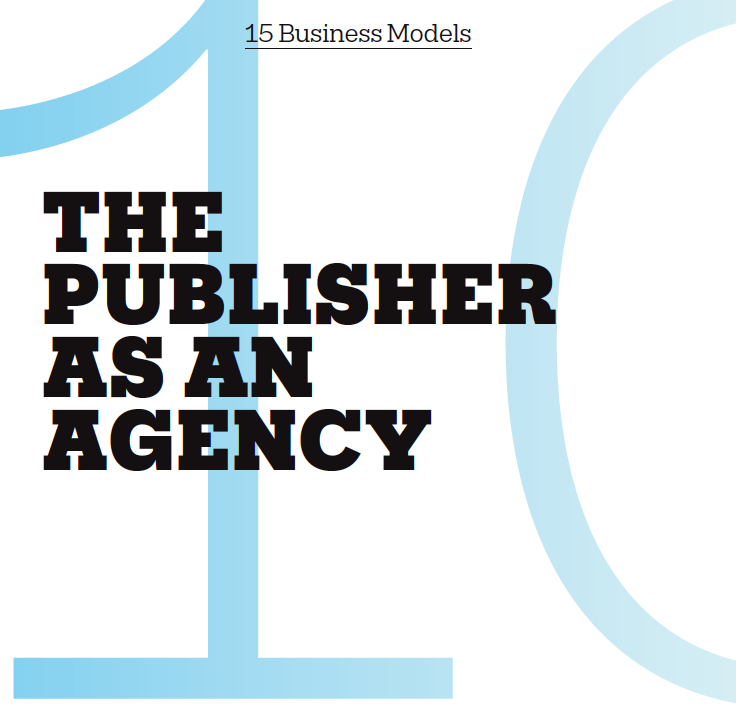
P content for brands is a way for news publishers to make extra revenue with their significant expertise in storytelling. A 2020 report by INMA notes that branded content is a strong strategy for consumers influenced by viral videos, on-demand entertainment, and unique experiences. It adds that branded content can create trust and lucrative relationships between media publishers, advertisers, and audiences when it’s done with an authentic voice, across multiple platforms, and backed by data. The bounce-back of ad markets after a difficult period during the COVID years has been one of the media stories of the last couple of years. As such, though it has its challenges, this would be a particularly good time for publishers to invest in content studios to partner with brands looking for strong campaigns and a more direct connect to high-quality audiences.
Examples
VOX – VOX CREATIVE
An award winning content studio, Vox Creative has become a one-stop content shop for advertisers. “We are a creative collective within Vox Media that connects brands and audiences through the things that really matter to them. We leverage the technology, insights, measurement tools and influence of our editorial networks to connect brands to a community that’s 125MM strong,” a note on the studio’s website reads. “From quick-hitting social first programming to premium longform storytelling, the team works closely with partners to connect with audiences wherever they spend their time. In the last year, Vox Creative grew the number of brands with which it worked by 24% year-over-year, expanding the number of brand advertisers it works with on integrated campaigns,” Digiday note as it awarded Vox Creative the prize of the for best content studio at the 2022 Digiday Media Awards.
THE NEW YORK TIMES – T BRAND
Another award-winning content studio working on multimedia branded content, T Brand has produced important content and programs for major clients such Cartier, Google, American Express and Verizon among others. “Our ranks include dozens of the finest editors, designers, art directors, video and audio producers, creative technologists and more— trusted by the world’s most exacting brands to tell their stories to our audience,” the studio describes itself on its website.
A winner for best content studio
at the 2021 Digiday Media Awards
for work with clients like Tide, Dropbox and Citi, the citation read: “The studio’s programs for Tide and Dropbox helped readers navigate changes in daily life and business, while campaigns for Snap and Citi promoted racial literacy in classrooms and supported initiatives designed to close the racial wealth gap.” T Brand had also advised numerous clients on their response to the pandemic with a consultation entitled The Business Acts, The Brand Speaks, designed to give clients confidence to reenter
the market.
CNN – CREATE
CNN’s Create studio specialises in human storytelling, drawing on CNN’s production heritage to offer cross-platform solutions to meet your brand’s objectives. The studio provides end-to-end creative services from campaign development to optimisation. CNN Create was a winner at the Digiday Media Awards Europe 2022. “This year the team has worked on 193 campaigns for 132 clients and its bespoke CMS base solution has enabled 120 high-quality customer sites to be brought to market in just hours for over 50 advertisers,” the citation said.
Challenges
There will be a lot of competition in this space from both traditional and upstart advertising agencies. Producing high-quality campaigns also requires a high level of investment in in-house studios and sales operations.

The dramatic increase in e-commerce as a result of the COVID-19 pandemic also accelerated publisher’s interest in its revenue potential. Some pandemic trends became lasting habits even post-lockdowns, and online shopping is one of them.
E-commerce would make up 19% of global retail sales in 2022, growing up to 25% of total sales by 2027, according to 2021 predictions by the British communications firm WPP. Their model anticipated that eCommerce sales would be worth $5.4 trillion in 2022, with China and the USA contributing just over half (52%) of this spending. The model also estimates that by 2027, eCommerce sales will be worth $9.1 trillion annually.
“This shift in consumer behaviors is both a challenge and an opportunity for publishers. To succeed in this evolving landscape, media companies need to adapt their content strategies, explore new revenue streams, and prioritise the user experience,” Damian Radcliffe, journalist, researcher, and professor based at the University of Oregon, writes for What’s New in Publishing.
“The move to frictionless shopping, and mobile commerce, for example, are dimensions that consumers expect when they buy products online. Publishers risk missing out if they don’t have this functionality embedded in their own eCommerce propositions,” he adds.
“By assuming a bigger role in the customer journey, a publication wants to get closer to the transaction and wants to have a higher take on the transaction,” says INMA Researcher-in-Residence Gregorz Piechota. “Publishers are seeing they really can’t make a lot of money with advertising because there is too much content available on the Internet. But we have good relationships with customers, and we can upsell them with products,” he adds.
There are various models through which publishers can take advantage
of the e-commerce boom. The most common is through affiliate marketing — sending customers to an outside link and earning the media company a percentage of the revenue from any purchase made. Key to making this model work is investing in a quality product review section that customers can trust as being unbiased.
Key Examples
THE INDEPENDENT
The Independent’s Indy Best section has continued to expand, in part due to the COVID-19 era shopping craze. The site, which offers product reviews and buying guides, “doubled the size of the team… to 16 people, including ten full-time editorial roles, during the pandemic,” Press Gazette has reported.
“This is a long-term commitment, and was before the pandemic,” the Independent’s managing director Christian Broughton said. “We are accelerating as fast as we can to grow this and I don’t anticipate it’s going away.”
In 2022, the publisher launched a new, integrated shopping service that allows readers to purchase products from editorial reviews on The Independent website, without being linked out to external sites. This is a great example of an innovation that keeps readers on the site.
FUTURE PLC
Future PLC drove nearly $1 billion in e-commerce sales in 2020 and that growth has carried over into 2021 and 2022. The UK media company owns brands like Tom’s Guide, Cinema Blend, Golf Monthly and Marie Claire.
According to Digiday, Future sold $960 million in sales order value (or SOV, the gross value of a product sold via Future’s content) for affiliate partners in 2020 via Hawk, its proprietary price comparison platform that launched in 2013. Hawk automatically identifies products and vendors that the company has an affiliate relationship with and embeds those links in product review articles, so that readers can see prices and retailers next to products mentioned. Hawk works with big retailers like Amazon, Walmart, Best Buy and Target, as well as smaller affiliate partners.
Challenges
Perhaps the big challenge is that there is a risk of losing reader trust when you are making money from recommending products. Some publishers, such as the Financial Times, don’t use affiliate linking for this reason. It is crucial to always clearly state when and where you may potentially receive affiliate revenue from links, and whether your journalists have received products as gifts from brands.
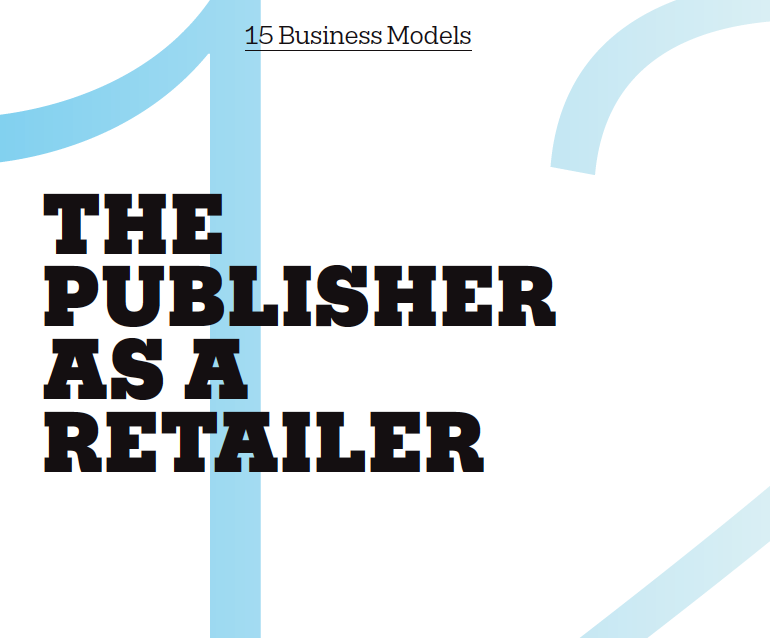
S everal publishers are now looking beyond affiliate marketing, finding that while it is easy enough to incorporate links into product reviews they were planning to publish anyway, there are limits to how much they can actually earn. Commission rates from retailer affiliate rates range anywhere from 1-20% for publishers, depending on the product category and the type of deal a media company is able to strike, SHE Media’s CEO Samantha Skey told Digiday in February 2021. The addition of affiliate links into editorial commerce content and product reviews are at the low end of that range, she added.
Increasingly, as the e-commerce business model develops publishers are looking to diversify strategy by offering their own branded products or becoming a one-stop shop for online retail with their own content-driven marketplaces. Doing this, of course, involves a higher level of investment and connection between sales and commerce teams, and possibly deep consumer research in order to ensure that a need is being met.
Examples
THE NEW YORKER
The New Yorker store, launched in November 2020, aims to provide readers with “apparel, home goods, and more that celebrate the magazine, its history, and its sense of humour”, according to its newsletter.
Products on sale include a signature baseball cap, worn each summer by the staff’s softball team, the Small Fry; a sustainably produced classic tee with the iconic logo, drawn by the magazine’s first art editor, Rea Irvin; and limited-edition socks featuring a riff on Eustace Tilley, the magazine’s original cover dandy, designed by the illustrator Luci Gutiérrez.
GQ – SUBSCRIPTION BOXES
In January 2018, GQ launched their Best Stuff Box, a quarterly package containing apparel, grooming products and style accessories. Revenues from the subscription-based were up over 150% two years later.
Writing for What’s New in Publishing detailing publisher strategies for e-commerce, Damian Radcliffe writes that other outlets have followed suit, with InStyle and The Cut launching55 their first product boxes in November 2021. Meredith’s InStyle magazine offered a limited-edition beauty box, with the contents “tailored to your astrological sign.
Digiday also wrote about the strategy in November 2019, explaining how product boxes “can be a tactile way for a media company to engage with people, show off its editorial curation abilities with products that people want to try out (and for less money — most boxes can be bought at a price lower than the total value of the products inside).” Alongside these consumer benefits, the article notes that they also “deepen relationships with advertisers and diversify its eCommerce offerings,” they note.
TIMES OF INDIA – MENSXP
One of the most interesting iterations of a direct content to commerce model, the Times Group in India acquired a website called MensXP in 2012 and parlayed the trust that readers placed in the brand to create a line of apparel, accessories and cosmetics.
Every month, MensXP, founded in 2009 by Angad Bhatia, connects with more than 30 million men and has more than two million active users a day. It carries content on fitness, clothing, style and entertainment amongst others. Times Group wanted to use the trust of the brand to create private labels. It researched gaps in the men’s grooming category, building brands and products in-house to serve these gaps. Since the company built these products itself, it sees a 70%+ margin, a much higher margin than other affiliate revenue, according to an INMA report.
The model is a combination of offering products of other brands and those owned by the Times. It’s a full-stack e-commerce business; Times Internet controls all touchpoints of the customer journey — from discovery and demand generation to warehousing and logistics.
Challenges
Taking on e-commerce giants like Amazon is no small task, and would involve substantial investment in both tech, quality products and most likely building off solid recommendation sections. The strategy would most likely work well when the publisher is able to identify a particular niche in the market that can be exploited.
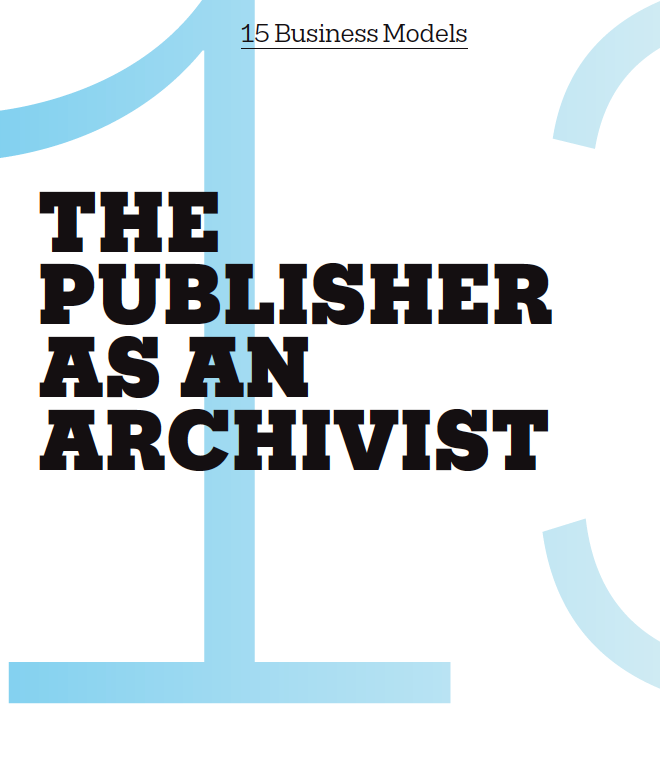
Longstanding news publishers are likely to have huge archives that are invaluable records of modern history. In addition to their value to journalists, publishers are now exploring more opportunities to use these resources to generate additional income or provide subscriber benefits.
For about two years now, this business model became intertwined with the NFT craze, with publishers looking to mint their extensive archives of images to be used as tokens. Time magazine for instance, was far and away the most successful in that regard. More recently, however, the NFT market has really taken a hit. As the 2022 Media Moments reports notes, “it’s difficult to know quite how that has affected plans at many publishers, many of whom were taking advantage of the early interest to generate non-incidental revenue from early adopters. We do know, though, that in October CNN shuttered its own NFT marketplace, The Vault, without much fanfare and after having been pushing the product only a month prior.”
Given this crypto winter then, and who knows how long it may last, we are only featuring more “classic” models of the archives business in this section.
Key Examples
THE ATLANTIC
The Atlantic announced in July last year that it completed a nine-month project of digitising its archive of more than 1,900 print magazines, a portfolio of writing that dates back 165 years to the founding of the magazine in 1857.
“The archive contains original works from American authors and thinkers, including Ernest Hemingway, Sylvia Plath, W.E.B. DuBois, Robert Frost and Mark Twain, all of which will be available on The Atlantic website,” Mark Stenberg writes for Adweek. The publisher first began uploading its writing to The Atlantic website in 1995, so the new material technically spans a time period of 133 years, editor-in-chief Jeffrey Goldberg says in the article.
“While the publisher sees the undertaking as a largely academic endeavour, it does aim to reap commercial benefit from the exercise,” Stenberg writes. “Like all writing on its website, The Atlantic will monetise the articles with digital advertisements, and it anticipates that the material will lead to an uptick in digital subscription.” Atlantic Chief Executive Nick Thompson told Stenberg he predicts that the venture will recoup its costs within two to three years.
HARVARD BUSINESS REVIEW – HARVARD BUSINESS SCHOOL CASE STUDIES
The Harvard Business Review uses case studies from the Harvard Business School to add value to premium subscriptions. These case studies, going back several years, bring real-world business dilemmas to life for students, entrepreneurs, and professionals around the world, often dissecting real-life situations where managers have to make key decisions.
Harvard’s case studies often make their way into college lesson plans. Educators can access course packets to use in their teaching. “It’s an entire collection of solutions to almost any type of business problem,” Nini Diana, HBR’s director of consumer marketing, told DigitalContentNext.
Who is it for?
This model can only work for publishers with a long history and the capacity to digitise archives. And increasingly, for news organisations that have the resources to take big bets on emerging technologies like NFTs.
Challenges
It is no small job for a large publication to digitise archives. Organisations as big as The New York Times and Reuters received funding from Google for the digitisation of their archives. The NYT said each person in its archive team had to scan about 1,000 images per day to complete the project in 2019. But if it can be useful to reporters, and bring in some revenue, it could be worth considering. Harvard’s case studies often make
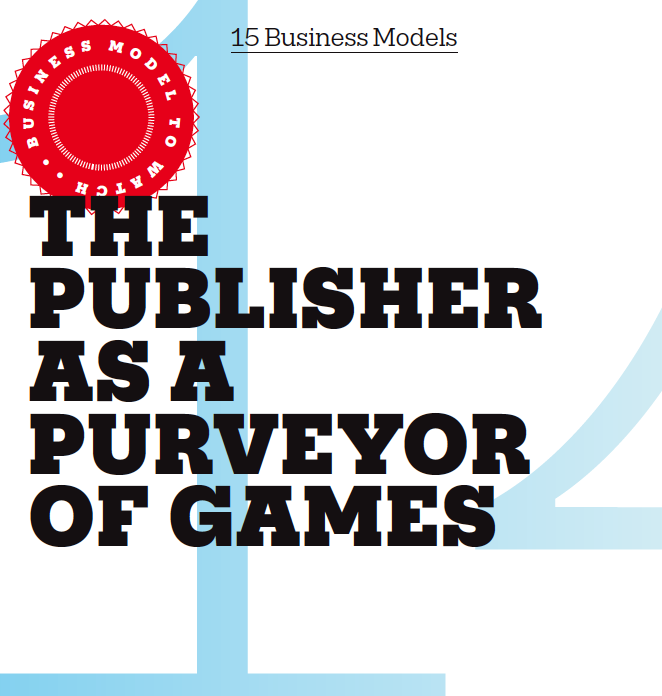
A s the race for subscribers and reader revenue intensifies, publishers are searching for more innovative ways for engagement. One route that is very much in vogue currently is the original habit-formation tool for newspapers – puzzles and games.
When The New York Times acquired Wordle, a hugely popular game that has people guessing five-letter words, it raised some eyebrows. It’s not every day, after all, that we see publishers buying free online games for a sum in the “low seven-figures”. However, when seen in the context of The Times’ ambition to increase digital subscriptions to 10 million in 2025, it makes perfect sense. Millions of people around the world play Wordle and they will now spend more time on the NYT website. If even a fraction can be converted to paying subscribers, it would make for an excellent business proposition.
The attention garnered by the NYT’s Wordle acquisition brought into renewed focus the importance for publishers to have multiple ways to engage potential new subscribers. Games and puzzles are thus growing in importance.
Examples
THE WASHINGTON POST
Digiday reported earlier this year that The Washington Post launched its first in-house gaming product, just over a month after announcing the closure of Launcher, its gaming and esports vertical. The move shows that national publications like The Washington Post still believe games are a good business — even if they remain unconvinced about the long-term sustainability of gaming journalism.
The Post’s first in-house game comes in the form of On the Record, a Sporcle-esque news quiz that tests readers’ knowledge of the week’s top stories. The game refreshes every weekday, serving up daily single-question quizzes and a 10-question weekend quiz published on Fridays. The product was masterminded by Christopher Meighan and Mike Hume, respectively the director and editor of emerging news products at The Post, as well as Amy Parlapiano, the department’s dedicated quiz writer.
“On the Record” has been in development since spring 2022, shortly after the New York Times’ January 2022 acquisition of the popular word game Wordle — but Meighan denied that the hubbub around the acquisition directly inspired the initiative.
“Obviously, it was there, but this wasn’t stood up to be a competitor to Wordle, if that makes sense,” Meighan said. “It was something that was kind of incubating before that, and we felt it was good to go into an area that was less word-game and more trivia-based.”
THE NEW YORK TIMES
The NYT bought Wordle in January 2022 and by the middle of that year it was already evident that buying the popular game was indeed a great bit of business for the publisher. When the company announced its quarterly earnings earlier for the year, it credited Wordle for a huge jump in new subscribers. “Wordle brought an unprecedented tens of millions of new users to The Times,” Times CEO Meredith Kopit Levien said in an earnings release, “many of whom stayed to play other games” and drove the company’s best gaming-related quarter ever.
Speaking to Digital Content Next, Jonathan Knight, The New York Times’ General Manager of Games, said he sees a correlation between daily engagement with the games and long term retention. “We see it as a great diversion from the news, when the news can often be quite rough,” he said. “We have a lot of people who are coming to read the news, and then the games are the ‘dessert’ at the end of the meal.”
Challenges:
Offering games is not a strategy in itself, Digital Content Next notes. “To fully maximise the gaming investment, publishers need to find ways to bring regular puzzlers into a deeper relationship, whether that be through newsletters, social features, or additional layers to the games themselves.” It would be difficult to monetise potential new audiences otherwise.
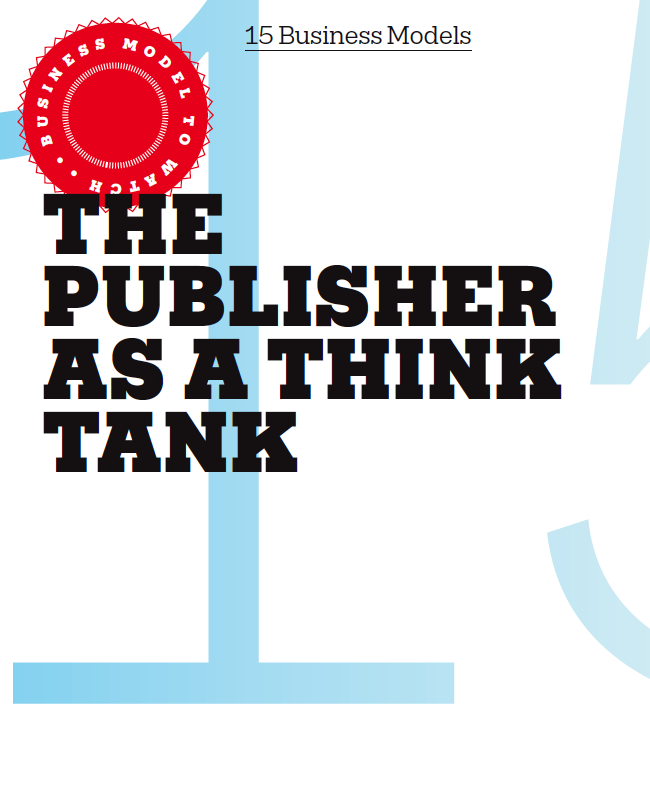
Publishers who have invested in experienced and quality staff to build up various coverage verticals can leverage this talent pool to produce high-quality reports for industry or government. Aside from being paid to produce the report, the release of the report itself can be leveraged in many ways – by publishing in their own media, having an event around it or getting sponsors and advertisers to associate with it.
Key Examples
FINANCIAL TIMES – FT STRATEGIES
In 2019, the Financial Times launched a small consulting firm using its own in-house talent and learnings from its own successful transformation, aiming to help other media and media-adjacent businesses. The consulting firm, FT Strategies, draws on the FT’s data scientists, product managers and digital experts, and uses the FT’s deep experience and expertise in data and technology, to help organisations build successful customer-focused businesses.
It offers guidance in customer engagement, culture change, advanced analytics, membership and subscription, and digital innovation. It is currently one of the most important consulting firms in the news and digital media space today.
SKIFT
In a report for What’s New in Publishing on “50 Ways to Make Media Pay” Damian Radcliffe identifies publishers conducting paid research as an important emerging business model. He points to the example of Skift, a website that describes itself as “Defining the Future of Travel.” It provides “global travel industry news, analysis & data on online travel, airlines, hotels, tourism, agents, tours, startups, tech & more,” and successfully blends news, newsletters and events with detailed research papers.
Promising “50 new reports every year” and with “125 reports in our library”, the team produces twice-monthly reports on topics such as The New Era of Food Tourism: Trends and Best Practices for Stakeholders, A Deep Dive Into AccorHotels 2018: Measuring Success From Asset-Light to Acquisitions and the U.S. Airline Sector: Skift Research Estimates Estimates.
BUSINESS INSIDER
Axel Springer, which owns Business Insider, bought eMarketer, a highly respected digital research pioneer, in June 2016 and plans were set in motion to complete its integration with Business Insider’s own intelligence unit. That merger took place in 2020 with the unit rebranded Insider Intelligence.
“Insider Intelligence is the definitive source of independent analysis based on vetted and transparently sourced data. More than 100,000 corporate subscribers worldwide trust our comprehensive, unbiased approach to provide the decisions about strategies, tactics, and budgets,” reads the description on the unit’s website.
“We are the combined entity of two research organisations, Business Insider Intelligence and eMarketer, sitting under the Insider Inc. umbrella. By bringing together the strengths of each – agility and rigorous methodology – Insider Intelligence provides its clients with insight into their industry’s digital leaders and most transformative technologies, as well as how their target consumers are spending their time and money.”
Besides being a successful direct sales business for companies, Business Insider will often feature the highlights of its research in an article on the website, encouraging readers to subscribe for full access to reports and briefings.
THE ECONOMIST
The Economist started the Economist Intelligence Unit, a service the outlet provides to clients who want to tap into the Economist’s research and audience, as far back as 1946. Digiday reported in 2021 that it had added a content marketing arm to help brands deliver their messages to the Economist audience, beefing that up with the acquisition in the spring of a content-focused PR shop.
Challenges
The challenge for this model is mostly in the preceding years of building up reputation and a body of work that could justify a marketing proposition as a provider of premium research services. Thereafter, there is competition aplenty from sector specific organisations that also conduct research and for whom this might be the primary business model.
The Innovation in News Media World Report is published every year by INNOVATION Media Consulting in association with WAN-IFRA, The report is co-edited by INNOVATION President, Juan Señor, and Senior Consultant Jayant Sriram


